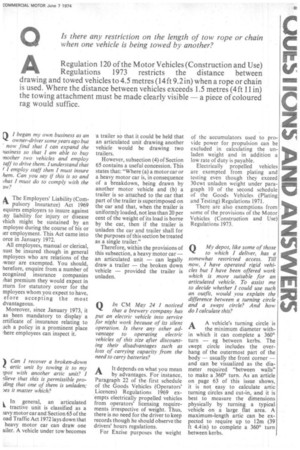Q My depot, like some of those to which I
Page 91

If you've noticed an error in this article please click here to report it so we can fix it.
deliver, has a somewhat restricted access. Till -now, I have operated rigid vehicles but I have been offered work which is more suitable for an articulated vehicle. To assist me to decide whether I could use such an outfit, would you explain the difference between a turning circle and a swept circle? And how do I calculate this?
A A vehicle's turning circle is the minimum diameter within which it can complete a 360° turn — eg between kerbs. The swept circle includes the overhang of the outermost part of the body — usually the front corner — and can be visualized as the diameter required "between walls" to make a 360° turn. As an article on page 63 of this issue shows, it is not easy to calculate artic turning circles and cut-in, and it is best to measure the dimensions physically by turning a typical vehicle on a large flat area. A maximum-length artic can be expected to require up to 12m (39 ft 4.4 in) to complete a 360° turn between kerbs.




























































































































































